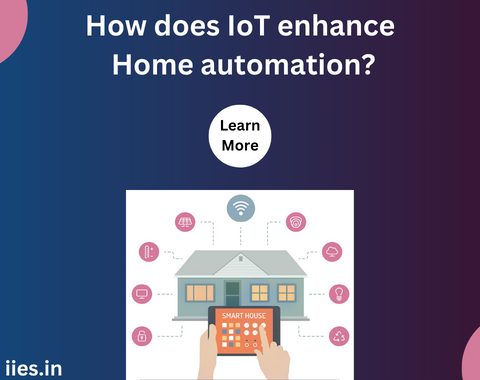
In the rapidly evolving landscape of technology, the Internet of Things (IoT) has emerged as a transformative force, influencing various aspects of our daily lives. One of the most significant areas where IoT is making a profound impact is in home automation. Smart homes, equipped with IoT devices, are changing the way we live by providing enhanced convenience, energy efficiency, and security. In this article, we will explore the myriad ways in which IoT is revolutionizing home living through home automation.
IoT-enabled smart lighting systems have become a cornerstone of home automation. Traditional light bulbs are being replaced by smart bulbs and fixtures that can be controlled remotely through smartphone apps or voice commands. Users can customize the brightness, color, and scheduling of lights to create the desired ambiance. Additionally, motion sensors and smart algorithms contribute to energy savings by ensuring that lights are only activated when needed.
IoT has brought unprecedented control and efficiency to home heating, ventilation, and air conditioning (HVAC) systems. Smart thermostats learn user preferences over time and adjust the temperature accordingly. They can be controlled remotely, allowing users to optimize energy usage and save on utility bills. Integration with weather forecasts enables predictive heating and cooling, ensuring a comfortable home environment while minimizing energy consumption.
Smart Home Security:
Home automation has significantly elevated the standard of home security. IoT-powered security cameras, doorbell cameras, and motion sensors provide real-time monitoring of the home. Users can receive alerts and access live feeds through their smartphones, enabling them to respond promptly to potential threats. Smart locks offer keyless entry, and access control can be managed remotely, providing homeowners with enhanced peace of mind.
Automated Home Appliances:
IoT has breathed new life into everyday home appliances. Refrigerators, ovens, washing machines, and other devices can now be equipped with smart features. For example, a smart refrigerator can notify users about expiring groceries or suggest recipes based on its contents. Similarly, smart ovens can be controlled remotely, and washing machines can optimize water usage based on load size.
Voice-Activated Assistants:
Virtual assistants like Amazon Alexa, Google Assistant, and Apple’s Siri have become integral components of home automation. These voice-activated systems enable users to control various smart devices using natural language commands. From adjusting the thermostat to playing music and even ordering groceries, these assistants enhance the user experience and streamline daily tasks.
Energy Management:
Smart meters and sensors monitor energy consumption in real time, providing homeowners with insights into their usage patterns. This data can be used to make informed decisions about energy conservation and potentially reduce utility costs. Automated systems can also turn off non-essential devices when not in use, contributing to a more sustainable and eco-friendly living environment.
Health and Wellness Monitoring:
The integration of IoT in home automation extends beyond convenience and security to health and wellness. Wearable devices and smart home sensors can monitor vital signs, sleep patterns, and physical activity. This information can be shared with healthcare professionals for remote patient monitoring or used by individuals to make proactive decisions about their well-being.
Intelligent Home Entertainment:
Entertainment systems in smart homes have become more sophisticated with the integration of IoT. Smart TVs, streaming devices, and audio systems can be interconnected and controlled through a centralized hub. Users can create personalized entertainment experiences, adjusting lighting and temperature settings to match their preferences during movie nights or gaming sessions.
Smart Window Treatments:
Window blinds and curtains have joined the realm of IoT, contributing to energy efficiency and home automation. Automated blinds can be programmed to adjust based on the time of day, sunlight intensity, or even the homeowner’s preferences. This not only enhances privacy but also aids in regulating indoor temperatures, reducing the reliance on heating or cooling systems.
Water Management:
Smart home technology extends its reach to water usage, promoting conservation and minimizing waste. IoT-enabled devices can monitor water consumption, detect leaks, and even control irrigation systems. Homeowners can receive real-time data on water usage, set limits, and automate the irrigation schedule based on weather forecasts, ensuring optimal landscaping without unnecessary water wastage.
Integration Platforms:
To streamline the management of various smart devices within a home, integration platforms have become crucial. Platforms like SmartThings, Apple HomeKit, and Google Home act as centralized hubs that allow users to control and monitor all connected devices through a single interface. This interoperability ensures a cohesive and user-friendly experience, regardless of the device’s manufacturer.
Data Security and Privacy:
With the increased connectivity of devices within a smart home, concerns about data security and privacy have become more pronounced. The collection of personal information, usage patterns, and device interactions necessitates robust security measures. Manufacturers are continually working on implementing encryption, secure authentication methods, and regular software updates to protect user data and prevent unauthorized access.
The rise of IoT in home automation is transforming houses into intelligent, responsive spaces that cater to the needs and preferences of their inhabitants. From energy-efficient lighting and climate control to advanced security systems and interconnected appliances, the possibilities seem boundless. As technology continues to advance, the integration of IoT in home automation is likely to become even more seamless, enhancing our quality of life and redefining the concept of home in the 21st century.
Indian Institute of Embedded Systems – IIES